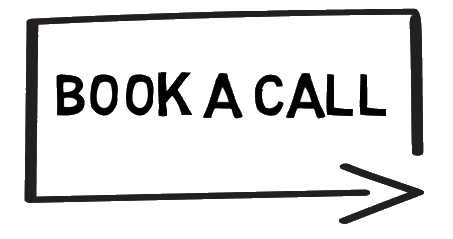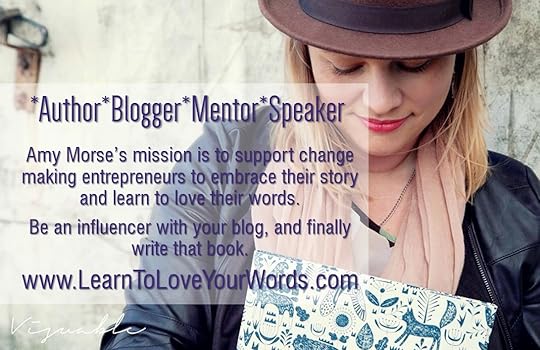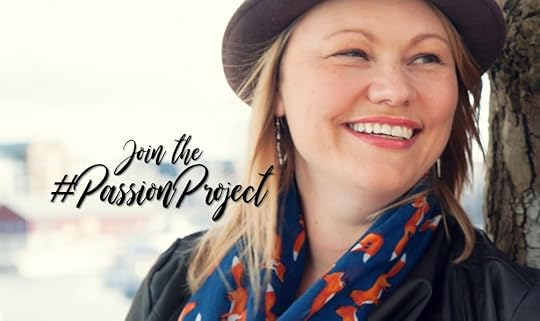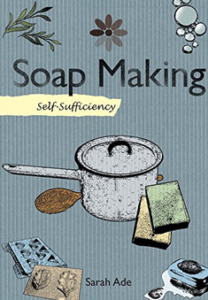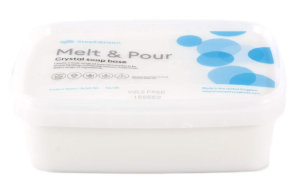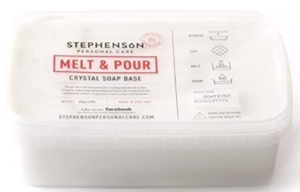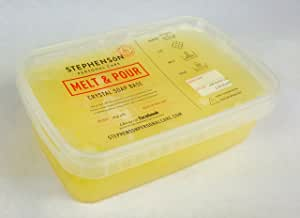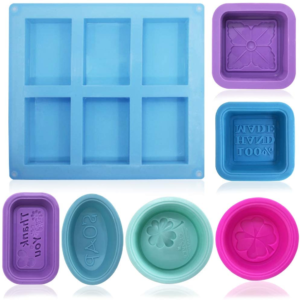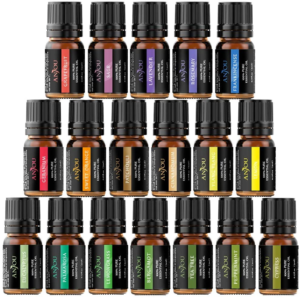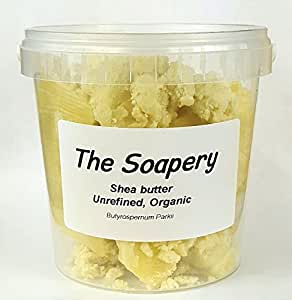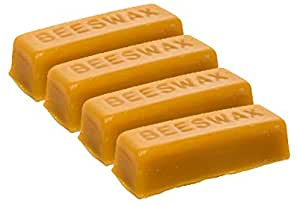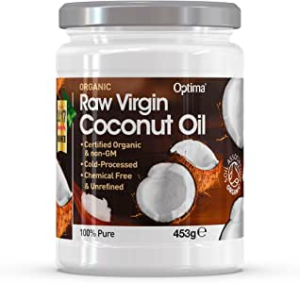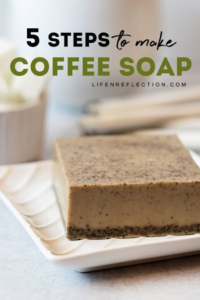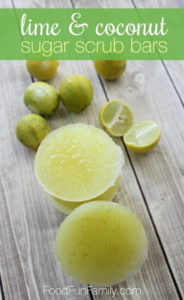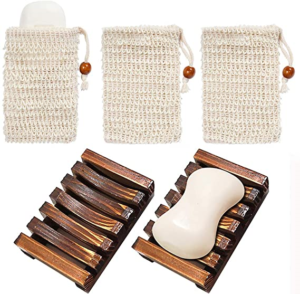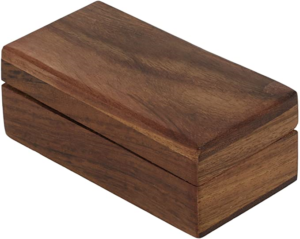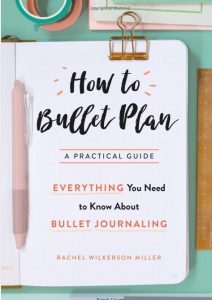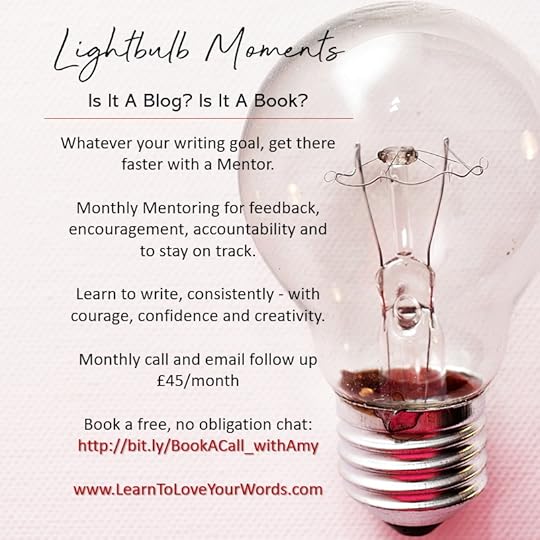Amy C. Fitzjohn's Blog, page 12
June 15, 2020
We Need To Talk About Micro-Enterprise

Larger businesses may be the backbone of the UK economy. But small and micro-enterprise are the tendons, blood vessels, muscles, joints and nerve endings that glue it all together.
In my 20+ years of experience, successive governments of various colours, have dismissed, undervalued, underestimated and ignored micro businesses.
We are the voiceless.
Aside from a few small, scattered Enterprise Agencies – where most of my Freelance work comes from – themselves micro businesses struggling to survive.
“Hang on?” you may be thinking, “We hear about support for SME’s (Small and Medium-Sized Enterprises) all the time. What are you talking about?”
SME (Small and Medium-Sized Enterprises) is one of those horrid lumps of jargon that most people assume covers all businesses that aren’t huge corporations.
Not so.
There is a significant difference and growing gulf between SME’s and Micro-Enterprise.
The definition of an SME, according to Simply Business is ‘fewer than 50 employees and a turnover of under €10 million’ (at current exchange rates that’s £8.9 million).
What is the definition of an SME?
The EU SME definition is currently set out in a document called EU Recommendation 2003/361.
SME is a business with fewer than 250 employees. It also makes definitions of the three categories of business within the SME umbrella. According to the EU definition:
A medium-sized business has fewer than 250 employees and either a turnover of up to €50 million or a balance sheet total of up to €43 million
A small business has fewer than 50 employees and either a turnover of up to €10 million or a balance sheet total of up to €10 million
A micro-business has fewer than ten employees and either a turnover of up to €2 million or a balance sheet total of up to €2 million
Whatever your personal feelings are about the EU, don’t dismiss this definition as ‘Brussels bureaucracy’. This is the definition policymakers use when they say pretty words about support for small businesses!
The Reality of Micro-Enterprise
Most micro businesses can only dream of 2 million euro turnover!
There’s no way the local fruit and veg shop, takeaway, small local pub, corner shop, farm shop, high street cafe, your friend’s hair salon, next door’s man-and-van business, a family cleaning business, delivery drivers or freelancers can relate to that!
If you work for yourself or run a business employing yourself and perhaps a couple of family members or staff, and your turnover doesn’t reach the current UK VAT threshold of £85,000 – it seems you ‘don’t exist’ as a business.
Never has this been so stark as during the COVID 19 crisis.
According to Excluded UK – a non-profit organisation set up to represent those excluded from government support schemes – there are an estimated 3 million people falling through the cracks.
Many of the exclusions affect the self-employed. For example, if you have recently started trading or have set up as a limited company, you cannot ‘furlough yourself’.
This goes beyond the lack of support available for millions of self-employed people in the UK during a time of crisis. It is a systematic, embedded, institutionalised and growing problem.
Business is Personal
Every role I’ve had has relied, whether directly or otherwise, on micro-enterprise (and now I am one!).
I started my career as an administrator at the VAT office.
Hospitality businesses and small farms made up the majority of our rural Devon/Somerset borders caseload.
Often food businesses, like restaurants, farm shops, takeaways, rural tearooms and small-town coffee shops are VAT registered because their turnover exceeds the threshold, despite their profits being low.
Later, as an Advisor at Job Clubs and on various employment and engagement schemes in Somerset and Bristol. It was the small local employers and family-run businesses that were the most likely to give an unemployed person a chance.
Shared Values
Those micro-enterprises were far more likely to invest time and energy in helping the people I was supporting to regain their confidence and grow their skills. They were open to accepting unemployed people on work placements.
It was personal for them.
They wanted to help, after all, that’s the one thing every micro-enterprise can absolutely say is WHY they do what they do. To serve, to help.
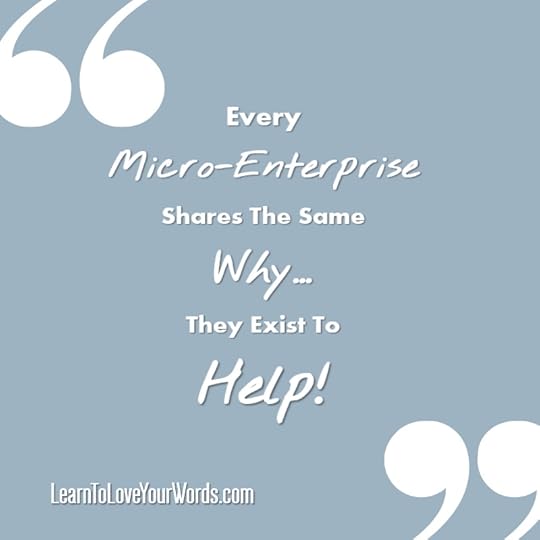
They were also the ones that offered those people jobs and opportunities. Large employers tended to treat them as valueless free labour, used them for a few weeks on placement then discard them back onto the unemployment heap. It left many feeling bitter, worthless and knocked their confidence back further than before.
As an Enterprise Coach, running start-up workshops (my last employed role before setting up my own micro-enterprise), every one of the thousands of people we worked with in the four years of the pilot project were individuals, sometimes families and partnerships. None of them were looking to employ hundreds of people.
They simply wanted to serve, to help, and to create a better life for themselves and their families.
In my current role, a Freelancer in Business Support, I see that it’s these businesses being disproportionately affected by the Coronavirus Crisis.
The ones who have been ignored, dismissed, undervalued and underestimated. The businesses that have always subsisted on small profits and good faith built up, often over generations, as integral parts of the community.
These are the businesses that used to make up the majority of our high streets. Where local authorities have been more supportive – against the weight of national government resistance – they are keeping High Streets alive!
It’s meaningless to say there is support available for small businesses when it excludes micro-enterprise.
Many support schemes (pre, during and post lock down) are aimed at SME’s, but micro-enterprises slip through the cracks. The lion’s share of support is going to bigger employers, to ‘small businesses’, (150+ staff is not a ‘small’ business! I’ve rarely worked for businesses that big!). The criteria to access support often excludes individuals or businesses that don’t have premises.
Neglecting the smallest businesses, the freelancers, the side hustles is ludicrously short-sighted. If even a small percentage become employers in the future, think of the potential volume of new jobs?
Even Business Agencies Fail To Recognise the Differences Between Small and Micro Enterprises!
Even associations set up to support small businesses tend to overlook the micro-enterprises, they focus on SME’s.
Just as an example, in surveys sent out across the West of England region – to get a snapshot of business growth and performance in the region – start with by categorising the smallest businesses as £1000K turnover and 1 – 10 staff. This effectively lumps micro-enterprise in with small businesses, as if they share the same experiences and face the same challenges!
I regularly take part in these surveys. I often feel they are so far removed from the reality of micro-enterprise, that I and many of my clients experience, they are meaningless. They don’t show the full picture or true representation of the state of business in the region (and I’ve said so in the free text ‘other’ boxes!).
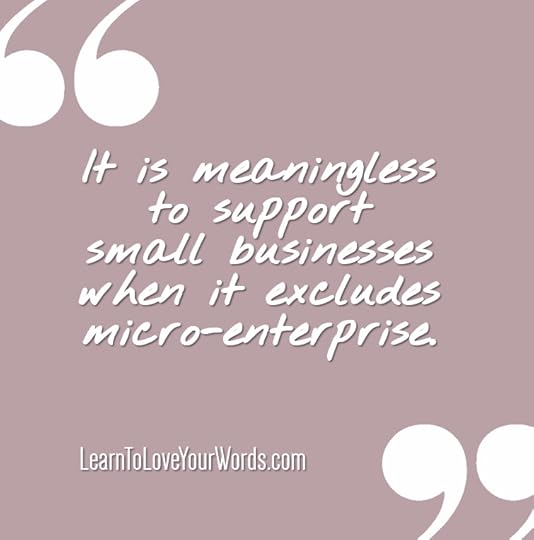
We’re not ‘SME’s’.
When you say things like £100K turnover in your literature and surveys, these are figures micro-enterprises can only dream of!
Limited Council Support
Unless a micro-enterprise is a paid-up member of a representative organisation (such as The Federation Of Small Business – note they are the Federation of ‘Small Business’ not the Federation of ‘Micro Business’) my local authority won’t even engage in a conversation! They simply don’t have the resources or the inclination to bother with individuals in business. Despite the ‘gig economy‘ being the fastest-growing employment sector in the UK. The ‘gig economy’ currently employs at least 5 million people. These are people who are self-employed as Sole Traders.
Council and Business Associations may be good at what they do, the point is, what they don’t do is provide micro-enterprise with an adequate platform, a voice, representation or opportunities.
Inclusion and diversity
There is a growing, unseen and often ignored underclass of freelancers, piece-workers and people giving their time for free (i.e.: to speak at events). They are often exploited. Disregarded by policymakers at a local, regional and national level. These micro-enterprise owners are not entitled to minimum wage, holiday or sick pay. We pay National Insurance to ensure that we are at least entitled to state benefits, such as a state pension. But when you go out on your own, you are exactly that! There is no safety net.
I’d like to see micro-enterprise being included and taken seriously.
Only then, can we start to build a truly progressive and inclusive society for the future.
From an inclusion and diversity point of view, it’s these individuals, family businesses or small independent retailers that shore up the high streets, and the local economy. They employ a diverse range of people.
Often, micro business owners/ Sole Traders/ Freelancers (whatever you want to call us) are people who for whatever reason don’t fit the 9 to 5 mould.
Like myself, they made the choice to take this path to bring more freedom to their lives. To be masters of their own destiny and to build a better life for themselves and their families.
Often, they have no other choice.
For others, they cannot get enough work that’s flexible or pays well enough to fit around and support their families and health needs.
People with skills, talents or hobbies that aren’t available or don’t offer many options through the traditional employment route.
They are passionate about making a difference.
The only way to achieve this is to do it themselves.
Whatever the motivation for going the independent self-employed route often…
These are the people that need support the most.
Could be the employers of the future.
Are reviving our local high streets when big retailers move out.
Employ people furthest away from the traditional job market.
Are more able to offer flexible working opportunities, because they are small, agile and adaptable.
Innovative and progressive.
Suit parents who otherwise couldn’t cope with the soaring costs of childcare.
Many have worked themselves off benefits and the cycle of dependency.
Why Should You Care About This?
This is not a pity piece.
We chose the independent route because we wanted change and wanted to be the pioneers for it.
This is a rallying cry!
If you are angry about racism and inequality and care about campaigns like #BlackLivesMatter. Remember, self-employment is often the only option for people experiencing prejudice and injustice.
When you choose where to shop. Remember, spending your money with a local shop will feed a family, rather than feeding the greed of faceless shareholders.
Be a savvy shopper: before you turn against big businesses like Amazon, remember, this is often the best route to market for micro-businesses, especially for independent authors. They also use millions of self-employed couriers who otherwise would be struggling to right now. And if you still worry about the ethics of Amazon, (let’s be honest, some of their ethics are shaky!) look at the Smile scheme – every purchase you make will donate to a charity of your choice.
We can all be a little more considerate with our purchasing choices. That’s the small part you can do!
If you truly care about creating a fairer, more just society you too should start getting angry about this!
I’d like to see more support for micro-enterprise, not just from policymakers but from all of us.
We all have a role to play and have the power to change things.
Start voting with your feet, your wallets and at the ballot box to demand change.
We’re Freelancers, Solopreneurs, gig workers, micro-enterprise – we are the invisible workers…
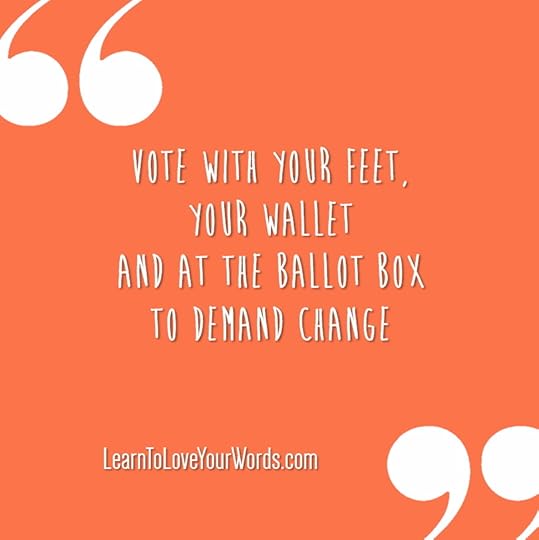
There is an enormous pool of forgotten talent in micro-enterprise.
I would like to see more providers using local Freelancer talent instead of bringing in big national providers. They currently favour organisations that support SME’s, but ignore the micro-businesses.
(Can you tell I’m passionate about this and could talk about it for ages!)
Success isn’t just measured by a bank balance!
Many business owners can only dream of million-pound turnovers. Those held up as ‘Business Role Models’ are so financially successful they become irrelevant. Especially for those of us just trying to pay the bills each month!
I’d like to hear more human stories. To hear from relatable people. People who have found business success in ways other than driving around in a flash car or buying their own private island!
Inspiring people we can benchmark our own micro-enterprise against.
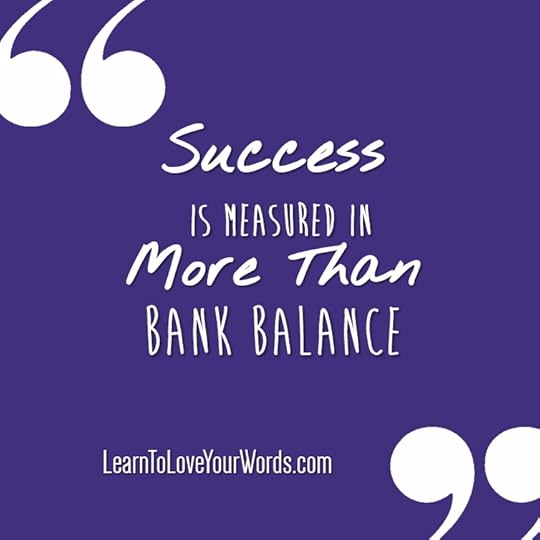
Where did I turn to when I needed help and support?
My fellow micro-enterprise community.
Because they get it.
They want to help and there is a great satisfaction to be had from business karma – help others and they will help you.
We are true to our values because we all share the same why… we’re here to help.
 Flip This on Flipboard
Flip This on Flipboard
Does your micro-enterprise need support?
Book a FREE 30-minute Inspiration Call with me. Let’s see what we can do together!
For instant updates when I publish a new blog post, Follow me on Bloglovin’
For extra goodies and exclusive new information, join my mailing list HERE.
The post We Need To Talk About Micro-Enterprise appeared first on Amy Morse.
June 9, 2020
Turn Your Inclinations Into Intentions

I write. I’ve written books. I’ve written hundreds of blogs. I bullet journal. I have a pen in my hand when I read. When I have an idea I process my thoughts by writing about them – writing helps me make sense of the world.
But is it easy, pah! No!
I may have an inclination towards writing, but when I sit to write with intentions it’s by no means an easy process. It doesn’t come naturally to me (are there actually humans who can sit down to write magic in one sitting?).
It’s why I’m not a ‘pen for hire’.
I don’t do copywriting – Sure, I could ‘sell’ myself as a writer, but I don’t because deep down, I know I’m not and I don’t want to!
Deciding What You Do and Don’t Want To Do
We all have things we ‘could’ do but don’t want to, don’t know how or don’t like doing. The ‘Fun Window’ is a useful model to help you decide what to spend time on and when to do it.
Like + Can Do
These are things you enjoy and come naturally to you. This is Maximum Fun. Do more of this!
Don’t Like + Can Do
This is where being a pen for hire comes in for me. I am able to do it, but I don’t like it.
These are things that you may find you do in the short term to reach another goal, but please don’t make them core to your plans. This is really Unfun! These are the things to say ‘no’ to, or delegate, or only do as a last resort and only temporarily.
Your intentions should always be to enjoy what you do!
Like + Can’t Do
These are your plans for the future. Things to work towards, the things to take on as part of your continuous professional development. They are enjoyable activities and you get a huge sense of satisfaction from having learned a new skill.
This is where many of my clients are. They are in the early days of their writing journey and it’s hard, but with time, effort, focus, feedback and practice, soon the skills they learn will come naturally to them and can become Maximum Fun!
Don’t Like + Can’t Do
These are Zero Fun. They are miserable and hard. Best avoided!
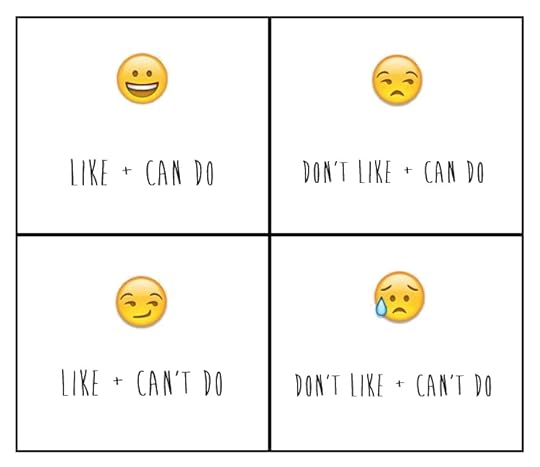
Why I Made My Choices
I never went into journalism, despite early forays at school writing PR pieces for the local paper from my role sitting on the school council. Politics and PR never were my thing.
I mostly wrote for the local paper and school newsletters because it got me out of PE and gave me ‘extra-curricular’ points I could add to future college and job applications!
Instead, my day job took me down the route of training. My intentions have always been to empower others. I want to be an encourager, I like being helpful, like supporting people. I like seeing the lightbulb flick on when they make a realisation.
When I run a workshop or give a talk my measure of success is that participants leave the room with a spring in their step and smile on their face. That’s it.
I’m not trying to sway their opinions or foist mine on them. Even a small experience doing things with a local paper and investigating a career path into journalism and PR in those school days was enough to put me off. I knew I wouldn’t fit in.
Although I liked the idea of being like Kate Adie (because really, how awesome is she!) and reporting from exotic locations, getting behind the scenes, exposing truths – I knew I didn’t fancy the reality of it!
Writing is something I do for me. I did it for a hobby when I felt like it and have ideas to explore. The notion of having to do it on demand and try and make anything interesting – even things I disagree with or have no interest in – makes me feel slightly queasy.
It’s why I don’t do copywriting, yet, frustratingly, I still get referrals for copywriting jobs! At least I now have the courage to say, “No”.
Don’t misunderstand me, I have great admiration and respect for anyone who is able to write on demand, make it engaging and do so in someone else’s voice. But I’m the first to admit that I suck at it!
It’s a skill I admire but don’t possess (and I’m fine with that).
No Competition
I don’t want to ‘compete’ with copywriters but I’m always open to collaborations.
My audience is different – there may be some cross over – but I’m not in the business of trying to make people write who can’t or don’t want to.
I’m here for the realists and the dreamers. Those who want to write (for business or pleasure). They already have the inclination and I help them convert that into intentions.
I don’t do copywriting, but I do bring my 20 plus years of experience as a trainer, coach, mentor and advisor to empower those that are open to it.
Making Writing Easier
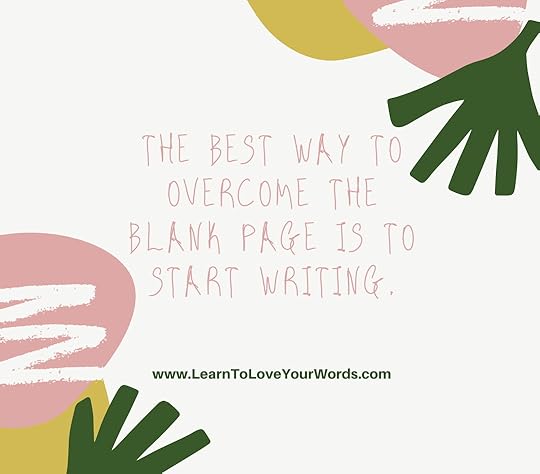
Because I find writing on demand hard, but I still have to do it for my own business (and sanity), I set intentions to try new activities, tools and techniques to get the writing juices flowing.
Here are my favourite techniques:
Unintentional Writing
We’ve all had those days where we intend to write, sit at the screen and our mind goes blank. We’ll do anything to get out of it because it’s hard.
I’m immediately going to dismiss the notion of ‘writer’s Block’, because when you give it a name, you give it power, and it’s not a thing, it’s just your own motivation and discipline!
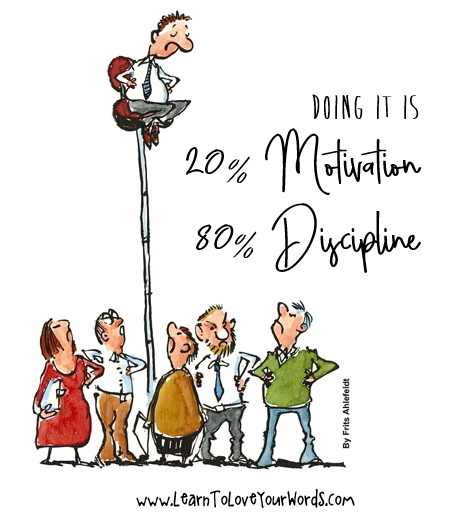
Don’t let yourself get away with it! Be true to your intentions.
If your boss was breathing down your neck telling you to ‘write that blog or write that book chapter otherwise you’re fired’, you’d do it. The best way to overcome the blank page is to start writing.
Write for no other reason than the experience of writing. Unintentional writing is a powerful way to break through creative blocks. Write for 30 minutes. Write whatever is in your brain, even if it’s…
‘I’m really struggling to know what to write because my brain is full of…’
It sounds weird and you might feel silly at first – but remember, no one needs to see it – but trust me, it really works. The point is to clear through the fog and engage the muscle memory for writing. See where it takes you!
Journalling
An extension of writing unintentionally is journalling. Check out Bullet Journalling if you want to learn simple techniques to make it more productive. Journaling is a small act of daily productivity that supports your mental health and gets you into the routine of regular writing.
Make Time To Write Regularly
Like improving your level of fitness, it’s far more effective to do a little writing regularly than a couple of bursts of activity each month.
Journalling is a great way to start a habit to write every day, but if you could do with a little more inspiration, ‘Like’ my Facebook Page or ‘Connect’ with me on Linked In.
I have a regular Write On Wednesday challenge to give you something to focus on once a week…
Find my Facebook HERE
Connect on Linked In HERE
Happy Writing!
 Flip This on Flipboard
Flip This on Flipboard
Struggling to find your writing mojo?
Book a FREE 30-minute Inspiration Call with me and learn to write with courage, confidence and creativity!
For instant updates when I publish a new blog post, Follow me on Bloglovin’
For extra goodies and exclusive new information, join my mailing list HERE.
The post Turn Your Inclinations Into Intentions appeared first on Amy Morse.
June 3, 2020
Passion Projects #9: A Little Business Brilliance, with Lori West

There are plenty of conversations going on about mental health and wellbeing in the workplace, it’s refreshing to meet Lori of Business Brilliance – someone who is actively making it their mission in life to do something about it.
I had a call with Lori West last week and I’m proud to feature her as my lastest Passion Project.
Lori’s passion lies in guiding people to create healthy, abundant lives for themselves and others.
Let’s meet Lori,
When she’s not saving the world, she likes to sing, dance, discover new restaurants, play tennis, ski and practice yoga. Here is a little more about her story…
A Passion Project Interview with Lori West

Why did you decide to do what you’re doing? Tell your ‘Origin Story’
While on a meandering wander through the worlds of business, mental health, personal development and music, I picked up some very useful tools and skills. I realised that what really I really enjoy is supporting people’s blossoming into a state of being comfortable and happy in their skin. I realised people in business could really use some of that, so I set about establishing Business Brilliance with the goal of helping people learn to recognise, embrace and utilise their gifts to be of service to others, many of which are borne out of life experience.
What would you do with your time if you didn’t have to work?
I am in a privileged position in which my work doesn’t feel like work. I love doing what I do, so I would continue doing it. If there’s one thing I would add to the list, it would be to include travel to lots of far-flung places. I am constantly amazed by the beauty of this planet and its people, and I’d love to know them all.
What really makes you smile from the inside out?
Children’s voices, especially when they are excited and totally immersed in something. It’s the innocent curiosity and the enthusiasm that I find so precious. I’m also a sucker for a funny or heartwarming animal video.
What is your proudest achievement?
I have two: marrying my husband and giving birth to my son. I have two absolutely gorgeous men in my life, and I am very lucky. I’m getting a bit teary now just thinking of them both.
Where do you want to be in 5 years’ time?
Well, I have got a MASSIVE secret project that I am working on with a few very creative, intelligent, inspiring people. I can’t say too much more than that, but I’d like to hope I’m still at the helm of it all as CEO and that we’re continuing to expand and innovate in the field of occupational mental health.
Who do you serve? Be specific, think of everyone you impact (not just customers)
I know this sounds really hokey, but all of creation. I meditate a lot, and that’s where I go when I do. It’s about the ripple effect. I know my actions impact the outer reaches of the Universe. That’s the place where I stand as a citizen of the Universe.
How do you want the world to see your business?
As a company, Business Brilliance, creates healthy businesses generating wealth for the people involved. I live by the principle of abundance. That does not mean I’m intending to be super-wealthy. It means that I know there is enough for everybody. Everyone I come across is a partner in my eyes. There is no space for competition in the world of abundance. It just doesn’t exist as a concept.
What one thing would you do to change the world?
Help people heal their trauma by understanding the mind. We all have traumatic experiences. It’s our mind that causes us to continue to relive it, even in the most subtle ways. I’d want human beings to be free from trauma-based conditioning. That would stop the wars, the conflicts, the violence, the lying, the cheating. Fear-based trauma and the victim narrative that accompanies it is at the root of everything that doesn’t work with the world we currently live in.
If you could have any superpower, what would it be and why?
I’d love to be a Time Traveller like Dr Who.
What advice would you give to your 16-year-old self?
Trust yourself.
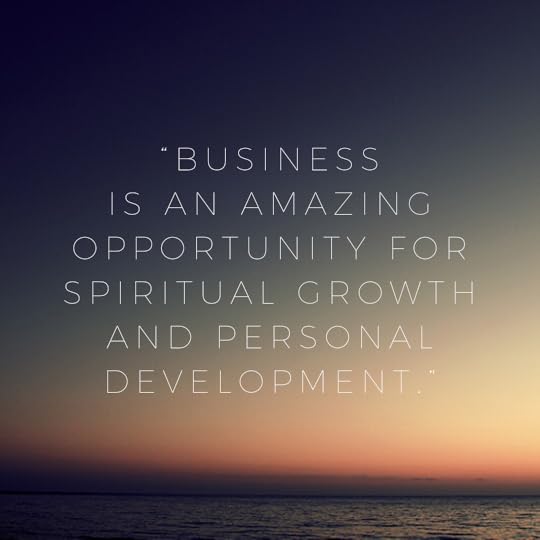
And finally, is there one thing you wish someone had told you before you went into business?
That it’s an amazing opportunity for spiritual growth and personal development. I never knew why it was so hard until I attended a conference in Los Angeles. One of the speakers rightly said, “Entrepreneurship is an extraordinary spiritual journey. You bump up against your ego limitations all the time, and the challenge is to discover how to move beyond them.” That is what has kept me going in the moments when I want to give up. I know there’s an amazing nugget of wisdom or opportunity waiting for me on the other side.
Thank you for sharing your passion project, Lori
To connect with Lori and learn more about her work the Business Brilliance website is: https://www.businessbrilliance.co.uk/
Invest in Advertorial on This Blog
Be immortalised on my blog and be one of my featured #PassionProjects
Get your business featured on the blog for £25 / $34 – via PayPal

The post Passion Projects #9: A Little Business Brilliance, with Lori West appeared first on Amy Morse.
May 14, 2020
Lockdown Makes: Homemade Soap
Making toiletries and soap at home has long been on my radar.
While we’re in Lockdown and staying home, we have been gifted time to get creative. I’ve been using some of my time to embark on random acts of creativity and learn and experiment with new crafts.
I believe that big change starts with small changes at home.
Tackling the enormity of climate change can seem so overwhelming and insurmountable that it’s easy to despair. But, if we all make small changes in our consumption and disposal habits we can collectively make a difference.
It’s about making simple swaps for everyday items for those that are more sustainable, not sackcloths, sandals and self-flagellation. Being ‘green’ doesn’t mean compromising quality and little luxuries.
When I shop for toiletries, it annoys me they are so heavily packaged in single-use plastics. It also bothers me that when I read the ingredients in products like shower gels and shampoos, I can’t even pronounce most of the items, let alone know what they are doing to my body!
This is one of the simple swaps I want to make. Also, to experiment and have a bit of fun with it.
It Started With A Book
To inspire me, I bought this book from Amazon:
The soap making purists would sniff at using melt and pour soap base (pardon the puns).
However, I have quite a random approach to anything I create in my kitchen, so it’s a quick and easy gateway into the world of soap making.
Because it’s not such an accurate chemistry process, melt and pour bases are more forgiving to experimentation.
I started with the basic Melt & Pour Crystal Soap Base
But there are bases available with other additives and properties such as Goat’s Milk
And Argan Oil
Start Small and Simple
I was a little concerned, having read through this book, that getting the proportions wrong could cause harm to my skin. It also put me off that it takes weeks of curing for the saponification process to complete.
That’s not to say I won’t try soap making from scratch in the future, but I wanted to get more confident first before I started buying lye in kilo quantities off the internet!
What was really useful in this book, were the recipes, with suggestions for combinations, but also the comprehensive lists and information about what and why to add particular ingredients. It helped me to recognise what combinations would work, depending on what I wanted my final product to achieve.
For example, Rosemary for healthy hair.
What Else Do You Need?
You can easily get carried away with soap making products. There are so many things to choose from.
When it comes to trying a new craft for the first time, I would discourage anyone from going out and buying all the fancy stuff. Start with the basics and use what you already have before you spend lots of money on all the gadgets and gizmos.
I say the same to any new businesses I support with my mentoring services.
You don’t need all the gear and bells and whistles to start.
Don’t take on a big burden of debt to buy technology, resources, stock and equipment that you don’t need from day one. Start small. Test, evaluate then build – step by step.
I recently worked with a group of photography students at City of Bristol College to run a Thinking About Business workshop. One of the group asked about funding and grants to buy the latest camera and lighting rigs – with the skills she had and the camera she was already using, she had more than enough to start a business. The fancy lighting rig and state-of-the-art digital SLR camera could come later.
Those things can be the rewards you give yourself through your business as it grows.
I don’t have plans to jack in my consultancy business and start a soap business (not yet anyway!) but the principle is the same.
Use what you have and reward your future successes with all the fancy things later.
Basic Equipment
Saucepan
Pyrex dish
Old spoon
Silicone moulds
I already had silicone cake moulds – meant to be cupcake-sized but also ideal for flat round soaps that are a nice size in the palm of my hand.
Alternatively, you could get rectangle or oval moulds for soap in traditional shapes
Basic Ingredients
Soap made with this method is made up of 2 ingredients:
The most basic soap is…
Melt and Pour Soap Base
Your choice of essential oils
This will give you a solid, dependable (but a bit boring) soap bar.
It’s time to get creative and add other ingredients for different results, looks and textures.
Oils and butters – Such as Olive oil, Almond oil, Avocado oil, Shea Butter, Cocoa Butter, Coconut oil…
Beeswax
Dry goods – herbs, spices, oats, nuts, coffee grounds, sugar or salt crystals, leaves, dried petals and flowers, citrus zest … If you’d put it in your mouth you can use it on your skin. Have fun with what you have in your kitchen cupboards!
Food colouring – I used Turmeric for a yellow soap…
I already had some She Butter and beeswax from an experiment last year to make my own moisturising cream and lip balm.
I also have Coconut Oil in my kitchen cupboard for cooking.
The Process
Start with small batches and experiment with different additives.
Although none of the raw ingredients here should harm your skin (unless you have an allergy), it’s wise to wear rubber gloves to protect prolonged expose so your skin doesn’t dry out. Also, wear an apron so you don’t ruin your clothes with waxy splashes!
1. Fill the saucepan with a little water and put on a low heat to get the water boiling gently.
2. Put the pyrex bowl on top of the pan, making sure the water doesn’t touch the bottom of the bowl, tip out the excess water if you need to
3. Scrape flakes of the soap base out with an old metal spoon and into the bowl. It’s better, and melts quicker, if you scrape away at the soap base and add flakes rather than cutting out a block to melt
4. Gently melt the soap base in the bowl over the water (in the same way you might melt chocolate), stirring to get rid of all the lumps. Keep the water on a low heat and every now and then release a little of the steam trapped under the bowl to stop it getting too hot.
5. Once your soap is melted into a gel-like liquid, you can add your oil/butter. I went with the trial and error approach. For a softer, oily soup use more oil/butter for a solid soap add more soap base and for really solid soaps or to offset adding too much liquid you can also scrape/grate in some beeswax. If you are adding lots of dry ingredients (i.e. oats) you may want to add a little more oil as the dry will soak up some of the liquid.
6. Once everything is melted and combined, take it off the heat and stir in drops of essential oil. Don’t go overboard, a lot of essential oil can be irritating to skin as it is super concentrated. Aim for 10 – 15 drops per small bar of soap in whatever combinations you like, a little extra if you want it to be more fragranced.
7. Add your dry ingredients at the end, stir in. If the soap starts setting while you’re stirring you can place the bowl back on the pan and warm it through.
8. Pour into your moulds and leave to set.
It takes 4 to 6 hours to set but I leave mine overnight to be sure. When you add extra oils it can take longer to solidify. Generally, a 1 part oil to 2 parts soap base mix will get you a good setting texture.
The great thing about the melt and pour soap base method of soap making is that if you come back the next day and if your soaps haven’t set, you can always re-melt them.
If your soap is too soft, melt more soap base or wax in the bowl over the water (repeating step 4). Once it’s melted add your soft soap to the mix, melt and stir in then pour it back into the mould.
For soap that is too solid, melt it in the bowl then add more oils/butter to soften it.
Where To Find Recipes?
Pinterest!
Pinterest is full of fabulous recipes and ideas.
Here are a couple of good ones that I’ve tried, adapted and have inspired my own ideas:
Making up your own combinations
Use citrus oils (like Sweet Orange, Grapefruit, or Lemon) for a zesty fresh soap – ideal for a refreshing wake up shower. Add orange/lime/lemon zest for bonus fragrance, a pretty soap and added exfoliant.
Zingy wake-up use Peppermint oil – add dried mint from your spice rack to make a pretty soap with added exfoliant
Sniffles-busting revitalising soap use Eucalyptus oil. Ramp it up with Lemon or Peppermint, too.
Warming, spicy soap – think Christmas spices – Sweet Orange and Cinnamon oils. Add dried cinnamon from your spice rack for a rich colour and added scent
Moisturising and gently exfoliating – add oats, honey and shea/cocoa butter – this will be lightly fragranced from the honey and oat but add a complimentary oil for extra scent, such as Tea Tree or Bergamot
Other ideas
Think about soap for different uses, for example:
Minty foot scrubber
Oaty soft exfoliating face soap
Soothing pimple-fighting tea tree face soap
Gifting
If you get really into it, or find you make far more soap than you can use at home, homemade soap can make a lovely gift.
I like this sisal pouch and soap dish combo.
Put your homemade bar inside the bag and wrap it together with the dish.
Or get a trinket box (charity shop bric-a-brac shelves often have them) – wrap the soap neatly in a sheet of Greaseproof paper, place it in the box and wrap it, perhaps with a nice card explaining what’s in the soap and what to use it for.
And finally…
My first attempts!
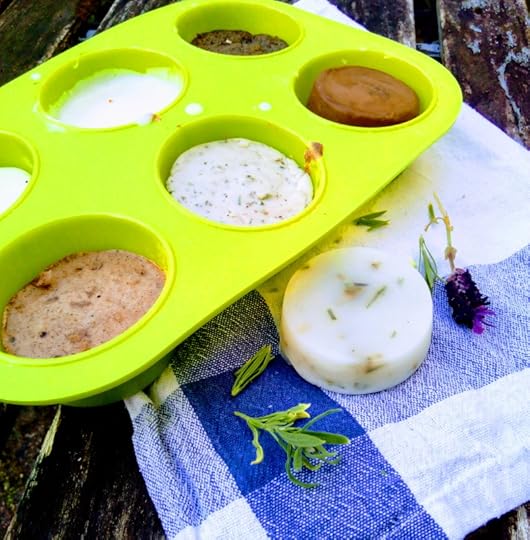
Some more successful than others, but they all smell amazing!
… and my husband is complaining that there are now several types of soap next to the kitchen and bathroom sinks!
 Flip This on Flipboard
Flip This on Flipboard
Follow me on Bloglovin’
If you like what you’ve read, say thank you by topping up the coffee kitty here. £2.50 /$3 will get me a cappuccino, Thanks

April 28, 2020
After The Great Pause

My newsletter at the start of March was about slowing down, less is more. I doubt many of us (certainly in the UK and US anyway) knew back then what was in store for us!
We are a few weeks into lockdown now and settling into a new and very different routine and reality.
We have been gifted this incredible opportunity.
Suddenly, many of us find ourselves with time on our hands.
Yet still, we feel the need to make out we’re busy. To justify how we spend our time. Carry on as normal, as if things were still ‘normal’. Filling our time, because that is what time is for… to be filled.
Usually, that would involve filling our time with things that earn us money or spending money, because we equate time with money… ‘Time is money’.
Never before have we experienced something like this.
Our worlds, the lives we have chosen have been put on pause. Forced by circumstance to stop scurrying around.
We’re not getting in our cars, sitting in traffic, sitting in offices, getting back in our cars and driving to activities. Many of the things we used to fill our time with have stopped.
Inevitably, people are restless with the ongoing uncertainty. Our telephone, Zoom, Skype and Social Media conversations are turning to “what we’ll do when things get back to normal”.
But, which bits of normal do we really want back?
This is a unique situation – akin to standing at a pick ‘n mix counter, we can scoop out only the tasty treats we want and leave the rest behind.

We have a choice to do things differently.
All those jobs we were told by our bosses we couldn’t do at home, we have proved can be done remotely.
Those hours spent on trains or motorways travelling to meetings have proven themselves unnecessary.
Indeed, many people who have been furloughed will be questioning what the point of their jobs was in the first place!
Doing needless work for the sake of being busy and paying the bills. Feeding the capitalist machine.
Scurrying around a corporate treadmill until we retire and society gives us permission to enjoy our lives, when we are at our frailest and most vulnerable. How does that make any sense?
How many of us will return to work, realising that our jobs are pretty pointless?
I can’t help but wonder what the point of some of my work is.
This pause is a great gift in so many ways.
Waking up, opening a window and smelling fresher air than I’ve ever experienced anywhere in the UK.
It’s so quiet. I hear so many birds… until the neighbours fire up their power tools – refusing to pause, keeping themselves busy!
‘Busy’ can be such a destructive concept, wearing busy-ness like a badge of honour.
An addiction to normalcy
I’ve seen some interesting content shared online about a return to normalcy after this great pause.
Businesses will be ramping up their advertising and sales campaigns to make up for the time/money they’ve lost. They will feed our craving for ‘normal’ activities and ‘new things’ to make our lives happy and predictable once again. It’s like an enabler feeding an addict what they crave. Prepare to be bombarded with advertising messages selling us normalcy again.
I like this Medium piece on the ultimate gaslighting.
A New Next Normal
It’s up to us to decide whether we want to buy into this, or choose to change.
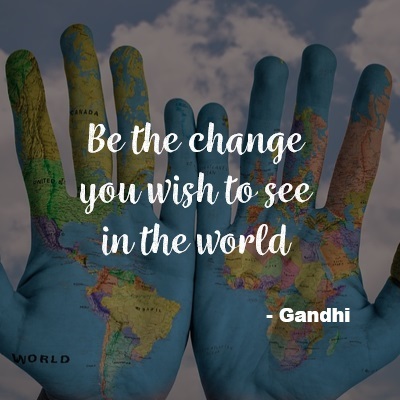
Being at home is making many of us realise we don’t need so much ‘stuff’.
Even the food we eat: we can get the basics, we don’t need all the fancy supermarket added value crap. Meat (if you eat it), veg, a few staples and the odd luxury – (chocolate and wine in our house!)
Flour is in short supply because so many of us are discovering how to bake again.
I’m enjoying:
The simple pleasure of taking time to prepare a meal from scratch
A slower more mindful existence
What’s Really Important?
We are starting to realise what really matters.
I enjoyed this article in The Guardian that wellbeing is not individual but social.
“There is a sense that, with the world having ground to a halt, our fantasies are finally taking flight.”
My favourite quote.
Not to play down the seriousness and traumatic nature of this current crisis, but to consider some of the fundamental shifts in how we treat each other, now in a crisis, and ongoing into the future.
The definition of insanity is doing the same things over and over again and expecting a different result. If we really want the world to emerge stronger, better and healthier on the other side of all this we can’t go back to what we were doing before. Continuing to live our lives constantly consuming and expanding, swallowing up resources and converting them into choking mounds of waste, will only exasperate the massive social, cultural and economic challenges we’ve been struggling with.
Realising that the job we spend so much time doing and being consumed by doesn’t really matter.
For my part, none of my friends or family really know or care what I do, as long as I can somehow meet their expectations of justifying myself as ‘busy’ and ‘earning money’.
“At no other time, ever in our lives, have we gotten the opportunity to see what would happen if the world simply stopped. Here it is. We’re in it. “
What do you want from the next new normal?
‘The things I want to be the new normal after lockdown’ is a talking point so it also makes a good writing prompt.
I’ve been sharing writing prompts, inspiration and challenges on my Facebook and Linked In pages over the past few weeks and this was one of them.
Read my response to this writing prompt here:
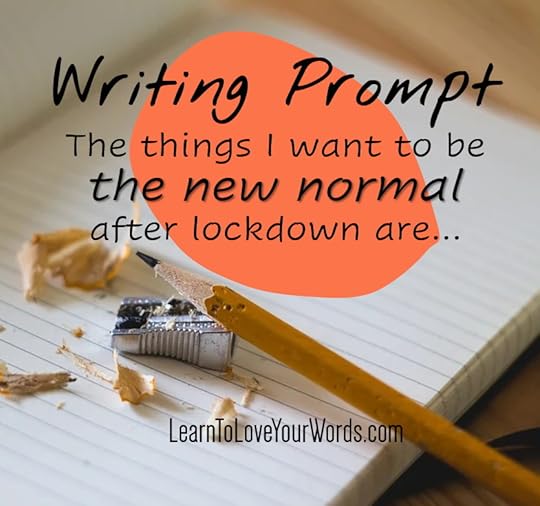
 Flip This on Flipboard
Flip This on Flipboard
Struggling to find your writing mojo?
Book a FREE 30-minute Inspiration Call with me and learn to write with courage, confidence and creativity!
For instant updates when I publish a new blog post, Follow me on Bloglovin’
For extra goodies and exclusive new information, join my mailing list HERE.
The post After The Great Pause appeared first on Amy Morse.
April 21, 2020
A Time For Soulful Writing

“One day I’ll quit my job and write a book!”
Have you ever said that?
Or what about…
“One day, I’ll go on a retreat and write my book?”
We’ve been gifted a unique opportunity.
Lives have been put on hold, we’re encouraged to Stay Home Save Lives. We are in a unique moment to make the most of this pause in normalcy to do something soulful, something we’ve always dreamed of doing.
If you have always wanted to squirrel yourself away, take a sabbatical, or an extended vacation…
This is the perfect opportunity to get writing!
It’s not Isolation It’s a Retreat
Let’s start with a mindset choice…
You’re not ‘stuck at home’, you are ‘safe at home’
You’re not ‘in isolation’ , you are ‘on a retreat’
As we adjust to our current reality we can think of this time as taking that retreat (just at home).
This can be a retreat with your business and with your creativity.
Being Productive at a Time of Grief
It’s understandable, indeed, it’s expected that our motivation may be waning right now.
I have a theory that this is a stage of grief.
Tragically, many of will be grieving for the loss of loved ones, due to COVID 19. But that doesn’t undervalue your own emotions at this time.
We’re responding to this unexpected and unwelcome change; grieving for the things we’ve lost… At the time of writing this, we’re almost a month into lockdown here in the UK. We may yet experience stages of grief, in our own sweet time and on our terms.
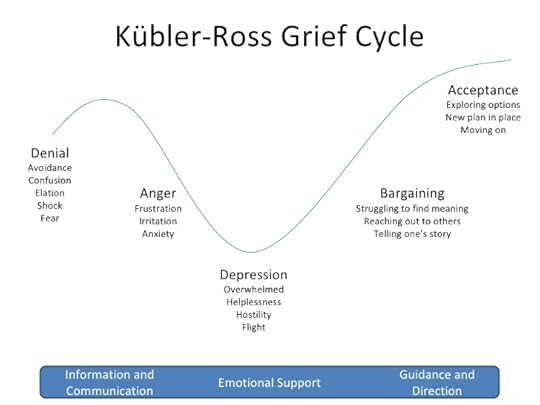
(Source: Wikipedia)
By U3173699 – Own work, CC BY-SA 4.0, Link
I’m not qualified to help people deal with their emotions, I’m simply sharing a perspective, some information and encouraging people to reach out to those who can help.
What I can do, is empower, inspire and bring a little positivity.
It’s OK not to be at your most productive.
Finding the motivation to do anything productive right now, considering the crisis unfolding around us, is perfectly normal!
Don’t put pressure on yourself to perform, to behave as if everything is normal when clearly, it isn’t.
Just be. Find things to be grateful and positive about.
That said, we can use it as an opportunity to make space in our days, in our routines, to get creative to carve out time to write.
Writing for the Soul
Writing has many proven benefits for your mental health.
Call it writing mindfully but I like to think of it as soulful writing. Not only can it nourish your mind but it can nourish your soul too.
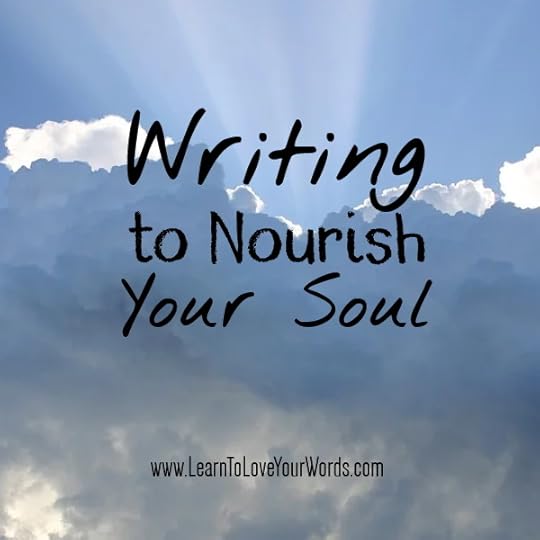
Writing for self-care. Processing our thoughts and feelings. Releasing what’s going on in our heads; getting it out of your system.
That stream of consciousness can be an incredibly cathartic process; to sit and write down what’s going on in your brain is part of the process of being mindful of our current situation. Acknowledging and accepting our thoughts and feelings.
It’s surprising how quickly those thoughts and feeling stop fogging your mind and allow more positive and productive ideas to surface.
An important part of self-care is to actually express our thoughts and feelings, by giving them words we give ourselves a voice, even if no one ever sees it. Taking it out of our minds gives us a sense of relief, allowing us to move on.
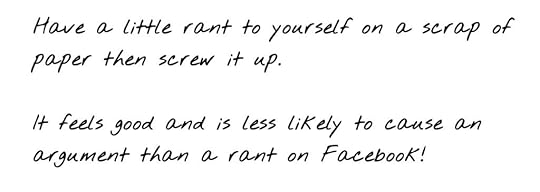
Just write, for the sake of writing.
No one needs to see it.
Write in a notebook.
Allow your mind to drift. Dump the guff out of your brain and make some space in there to stretch your creative legs.
It’s surprising what little nuggets pop out when we clear away the word-cobwebs!
Don’t question it, don’t second guess yourself, don’t edit as you go, don’t pressurise yourself, just do it – Just write!
I call it ‘Unintentional Writing’
Writing just because…
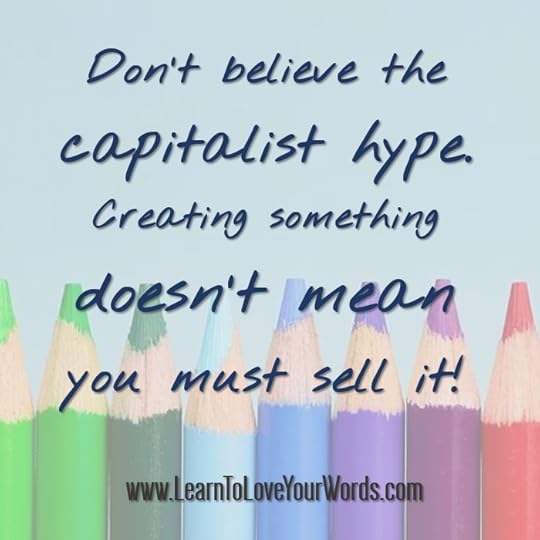
A Soulful Writing Mindset
Writing those things down, getting the words out of our brains also has the advantage of putting us in a mindset for writing.
Literally writing a stream of consciousness – what we’re thinking about right now – let it flow then keep going.
Don’t self-edit, the point of this exercise is not to produce a beautiful piece of writing, it’s to actually get words out of your brain, unblock what’s in there. Find clarity by giving it words, giving it a voice and giving substance to our thoughts. It has the advantage of breaking through those creative blocks.
Writing because you feel like you should be writing, but don’t know what to write about.
Before you know it, what’s buried beneath will come to the surface. The thing that you need to write – right now – the thing that you need to acknowledge and needs to come out. The thing you need to say will gradually find it’s way out of your brain and through your hands. Once you break through the fog, putting yourself in that experience of writing, you can start to tap into the creative nuggets.
It’s a bit like panning for gold. Shaking away the dirt to find those shiny morsels. Scooping up all of the rubbish that’s in your brain and washing it out through your words until it releases those hidden gems.
You can then cut and paste those shiny morsels into your blogs, your book, or whatever writing project you are working through.
Time To Get Writing
I am planning a series of online events and activities to inspire and motivate you to get writing.
Join me on:
or
Linked In
Whether it’s creating a bulk of blogs and creative content to see you through the rest of the year; to get ahead of yourself with your content marketing – or writing the book that you’ve always wanted to write.
Slightly selfishly, by taking you through this process, I’m following my own advice, so I can unblock some of my own creative barriers. I’m taking a soulful approach to my own writing. If I turn my energies towards inspiring you to write, in turn, my energies will be directed to write and tap into my own creativity. I want to start my next big writing project!
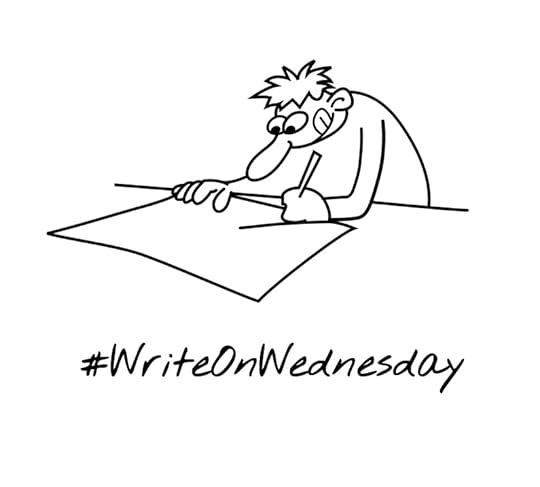
Write on Wednesday – build healthy writing habits, a bit like going to a weekly gym class for your creative writing brain!
 Flip This on Flipboard
Flip This on Flipboard
Struggling to find your writing mojo?
Book a FREE 30-minute Inspiration Call with me and learn to write with courage, confidence and creativity!
For instant updates when I publish a new blog post, Follow me on Bloglovin’
For extra goodies and exclusive new information, join my mailing list HERE.
The post A Time For Soulful Writing appeared first on Amy Morse.
April 15, 2020
The Joy Of Journaling

Getting creative with a journal – I love stationery. I have loads of notebooks. And coloured pens, and stencils and stickers.
When I saw this book I knew I needed it in my life.
So, what is a Bullet Journal?
It’s a planner, to-do list and diary that will help you get your life together!
It’s a simple system to use one notebook for everything.
The best part, all you need is pens, a notebook and a little creativity. The perfect excuse to shop at Paperchase!
A Book Review
This is a clearly written, easy to follow and all-round lovely looking book. With enviable journal page images and ideas for page layouts.
In Bullet Journal world, page layouts are ‘spreads’.
The book features handy templates for monthly spreads, weekly spreads, daily spreads, habit tracking spreads and a whole host of other ideas to get your creative juices flowing.
Putting it into practice
‘Bullet Journaling’ is something I’ve been curious about for a while. I even started a Pinterest board for journal page ideas. My mind was blown when I realised how much of ‘a thing’ it was!
Starting a Pinterest board, however, then reading a book are two very different things.
Pinterest boards are all about intention and ideas, buying a book is an investment, it’s the first step into taking action!
Why Journal?
Track daily habits
Monitor To Do and Done lists
Keep notes in one place
Getting creative with page layouts
One book for everything
The catharsis of expressing yourself without fear of judgement
You can be as free as you like in your own personal journal.
Record and track as much or as little as you like.
I kept a diary as a teen, and some people use their journal for this, but for me, I don’t record things every day. My journal is my daybook – I use it track my To Do’s, my Done List, make notes from meetings and events, and to capture ideas throughout the day. It’s useful to monitor progress, track habits and business and personal goals.
I track daily water intake and 5-a-day:
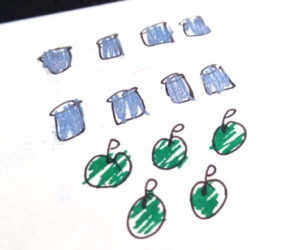
Tracking progress forces you to spend time every day reflecting on what you’ve achieved and what you want to do the next day. It feels like a much more mindful approach which in itself is satisfying.
How To Rock Your Journaling
My current journal has dotted pages.
It’s the first time I’ve tried dot pages. The idea is you can use the faint dots to line things up neatly. Up to now, I have favoured a plain paged notebook.
My Journalling Lightbulb Moment
I had three lightbulb moments from reading this book:
1) A code for bullet points
2) Page numbering
3) An index section
A Code – sounds complex, but it’s actually really simple and an easy way to keep track of progress. It means you can make a bullet point as complete, in progress, cancelled or migrated and at a glance see what needs to be done and what you’ve already achieved.
Page Numbering – It seems obvious now, but rarely do we number pages in our notes books. It means we are going back and forth through old notes trying to find information.
Index Section – With page numbers and an index you can quickly go back to what you need. It means you can keep everything in the same book, working through it as it happens, then flick back to those pages of meeting notes, or blog ideas or To-Do lists…
The One Notebook Method
By numbering and indexing, you can keep everything in one place. Rather than packing a bag for the day, trying to plan ahead and decide which books you’ll need, you just pack one book in your handbag.
The method allows you to do everything in one place, however, I still keep separate notebooks for business planning and fiction writing, only because I can fill up a single notebook very quickly!
I use my one book as a daybook, which means when I’m out and about on holiday or out with clients I can do anything I need to in one book and quickly look up notes at a later date. If that information then needs to be transferred to a digital forgat – i.e. blog drafts or client notes – I use the microphone on my phone to ‘talk-to-text’ in an email to myself by reading out the notes. By emailing it to myself, it reminds me to do something with it. I tried capturing notes in Google Docs, but would then forget about them. By sending an email, it pops up in my inbox.
There is something creative about the visible, visceral, experience of physically writing down information. I can enjoy the experience of physically writing and being able to work from anywhere without needing an internet connection. Anything to get us away from our screens and getting creative with our words!
 Flip This on Flipboard
Flip This on Flipboard
Struggling to find your writing mojo?
Book a FREE 30-minute Inspiration Call with me and learn to write with courage, confidence and creativity!
For instant updates when I publish a new blog post, Follow me on Bloglovin’
For extra goodies and exclusive new information, join my mailing list HERE.
The post The Joy Of Journaling appeared first on Amy Morse.
March 2, 2020
If Your Homepage Isn’t A Sales Funnel, You’re Missing Out
This is a timely submission from a contributor as I am just in the process of updating my website with my 2020 offering. This is an interesting take on how to make your website work harder for your business.
If Your Homepage Isn’t A Sales Funnel, You’re Missing Out
For years, marketers have been beating the drum on the importance of “sales funnels.” The basic idea is to lead a customer down a path from initial interest to the point where they are willing and happy to part with their money. For the most part, it’s a pleasant process as the prospective customer learns more about the product and whether it is the right match for them. They first discover it, want to find out more about it, and then decide that they want it to be a part of their lives.
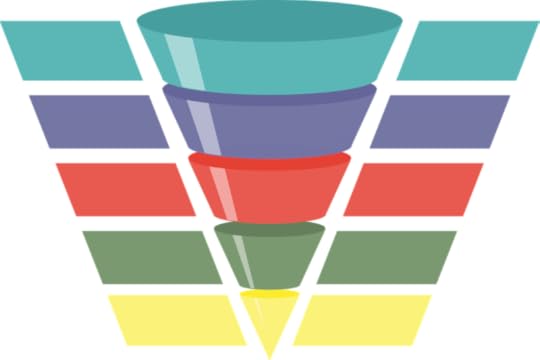
Marketers, however, usually only deploy sales funnels to a single product at a time. Rarely do they see their entire business – their whole website – as a funnel. It’s usually a matter of a customer clicking an ad, arriving at a landing page and then responding to a call to action – single customer viewing a single product and clicking a separate CTR.
But now there’s a new kid on the block, aptly called the “homepage funnel.” The idea here is to transform the homepage experience so that it too becomes a kind of funnel for users.
The Problem With Homepages Right Now
At present, there’s a problem with homepages. The majority of them are simply glorified menus, designed to allow customers to find the products and services that they want. The only issue with this approach is that people don’t always know what is right for them. What’s more, it seems strange to use landing pages for your sales funnel for individual products but NOT for situations in which you want to sell lots of different things. Surely if the process works for one of your offerings, it should work for many?
If you ask an SEO company what the most crucial aspect of digital marketing is, it will tell you that it is directing users to products. Ultimately, that’s your goal. You want to pair people with the things that will benefit them.
Homepages don’t do this; not as they stand, anyway. Instead, they expect customers to know exactly what they want immediately.
Transforming Homepages Into Funnels
The solution is to transform your homepage into a new funnel that directs people to your other sales funnels. How this works is pretty straightforward. You attempt to classify customers by their need and then create calls to action that immediately take them to the relevant single-product funnel.
So, for instance, let’s say that you’re an accounting firm, and you want to improve your home page. You could have a button for business customers that take them to your corporate sales pages, and another for individuals or sole traders which forwards them to another.
While it might seem similar to regular homepages, the psychology of a homepage funnel is very different. You’re collecting people through your SEO efforts and then directing them to the relevant sales channel, taking some of the uncertainty out of the process.
The result of this is usually a higher number of conversions and sales, and a boost to your business. Good luck.
The post If Your Homepage Isn’t A Sales Funnel, You’re Missing Out appeared first on Amy Morse.
February 18, 2020
How Awakening Your Creativity Can Benefit You and Your Business

When we talk about creativity, the first thing people think about is being ‘artistic’.
I believe we are all creative, it’s part of our DNA. The ability to imagine possibilities is what makes us human. Just because you can’t draw, or play a musical instrument or write a poem doesn’t mean you are not creative. You may not be ‘artistic’ but we all have the ability to solve problems – creativity is simply problem-solving in action.
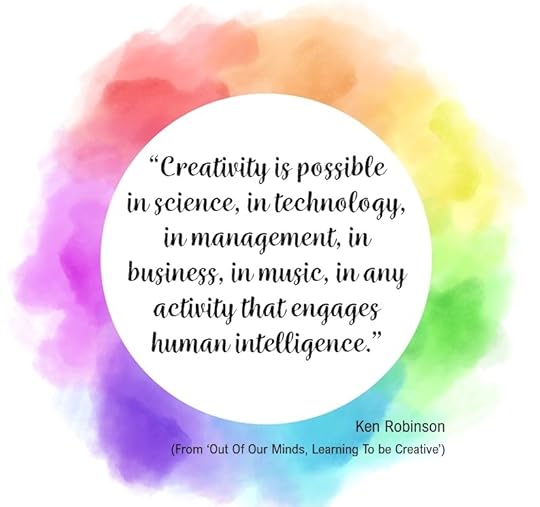
Awakening Your Creativity
In this context, getting creative is about experimentation, play and having a go at something, just for the pleasure of doing it.
It doesn’t have to involve expensive equipment or going on courses, there are plenty of small things you can try, just because you can.
One of my intentions for 2020 is to do something crafty or creative every month. I want to learn new skills and have a bit of fun with it.
No one needs to see your embarrassing attempts, this is just for you.
A Vision Board
One of my first acts of creativity was to create a vision board.
I do this every year.
The idea of a ‘Vision Board’ or ‘Dream Board’ is to put together a display of images and words that inspire and motivate you.
Here’s the Wikipedia definition:
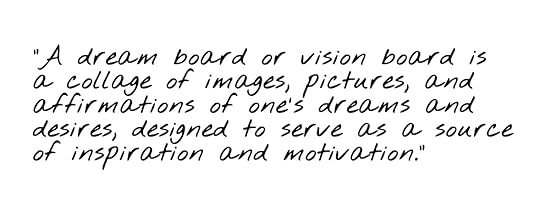
The purpose is to remind you of what’s important.
The idea is that there is a ‘Law of Attraction’ – that what you focus on will be what you get.
I’m not a great believer in ‘wishing something’ and it coming true or ‘manifesting’ things, but I do know from experience that when you focus on something, when you are reminded of it, you have a desire to achieve something and channel your efforts and energies towards it, you are far more likely to succeed.
You can dream or imagine anything your heart desires, but you still have to put in the work to make it happen! A vision board is a visual representation of those goals.
As a writer, I’m drawn towards words, so my Vision Boards have always been filled with lots of words and phrases that resonate with me.
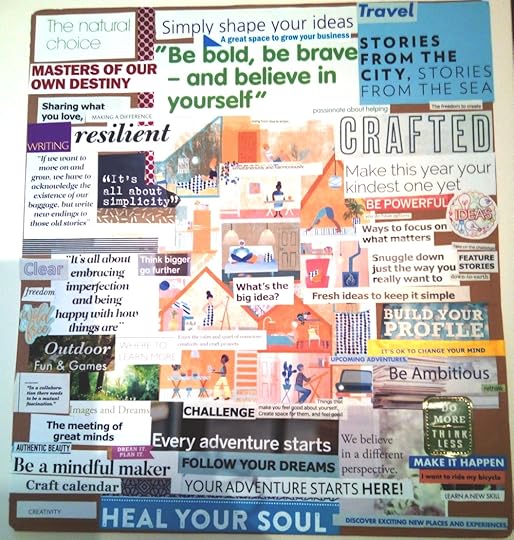
I was drawn to the image of the house. Perhaps it’s representing being at home with myself and my business?
The trouble is, when I created my vision board last year and also creating one this year, I cut out so many words and images from magazines that inspired me, I had too many for my vision boards!
Random Acts of Creativity
My latest random act of creativity is to put these words and images into collages in a notebook. I’m not sure if I’d call this ‘scrapbooking’ or an ‘Artists journal’ or a ‘vision book’…
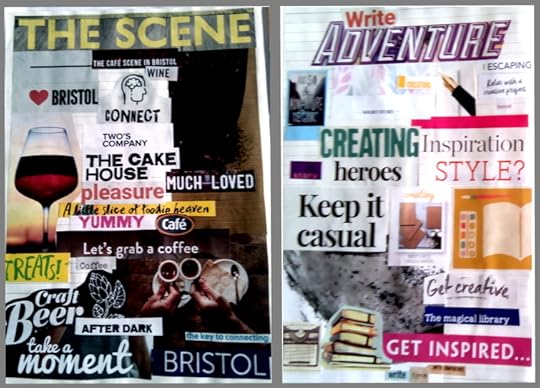
It’s been a fun process. There’s something therapeutic about collecting words and pictures and creating inspiring images with them!
It helps me to realise what’s important to me, what I want to focus on and what I happen to be thinking about at the time.
Getting Creative Will:
Having a go at something creative – whatever that may be – can have a positive knock-on effect in so many ways throughout your business and life.
Here are 11 unexpected benefits of getting creative…
11 Unexpected Benefits of Getting Creative
1) Change your mindset to see patterns and beauty
2) Learn new skills that can be transferred into other elements of your business and life
3) Mindfulness – coming, sense of achievement
4) Be open to ways to bring a creative flair to the parts of your work, such as your marketing
5) Give you a better appreciation of visual arts, design and creating stunning images which will help you create better visuals for your marketing
6) Give you something to focus on other than your business – a healthy diversion
7) Connect you to creative people you may never have met otherwise
8) Potentially create an extra income source. If you find a craft you love doing, can do easily and well you could sell them as products
9) Sense of achievement
10) Can still ‘feel productive’ when business is slow
11) It’s fun! We could all do with a little more joy in our lives
 Flip This on Flipboard
Flip This on FlipboardFind freedom through writing for yourself…
Book a FREE 30-minute Inspiration Call with me and I’ll help you rediscover your creative side.
For instant updates when I publish a new blog post, Follow me on Bloglovin’
For extra goodies and exclusive new information, join my mailing list HERE.
The post How Awakening Your Creativity Can Benefit You and Your Business appeared first on Amy Morse.
February 11, 2020
Idea Sharing vs Idea Creating – Discovering Flipboard

It’s stressful having to come up with new and fresh content ideas all the time.
But, what if I told you you didn’t have to?
Millions of new articles, images and videos are uploaded to the web every minute of every day. There are endless possibilities, ideas and inspiration tucked away in all that outpouring of human knowledge and experience.
It’s there as a resource for you to learn from.
Of course, you should NEVER take someone else’s content and pass it off as you own, but you can reference and share other people’s content within your own. In fact, I positively endorse resharing other people’s content, it’s a fantastic way to build connections – in the digital and physical world.
‘Sharing other people’s content is a fantastic way to build connections’
How Flipboard Can Help
I’ve recently discovered ‘Flipboard’.
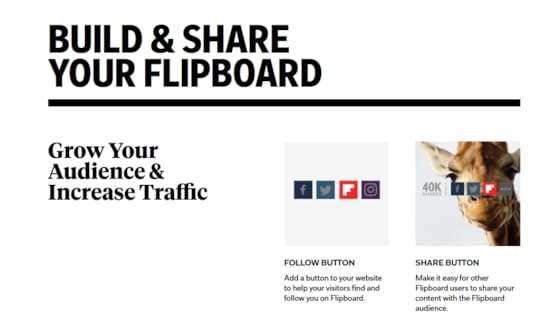
Flipboard is a content discovery, curation and collection site. It was founded as one place to find the stories for your day. You can sign up for free and start browsing, but beware, it can be a rabbit hole!
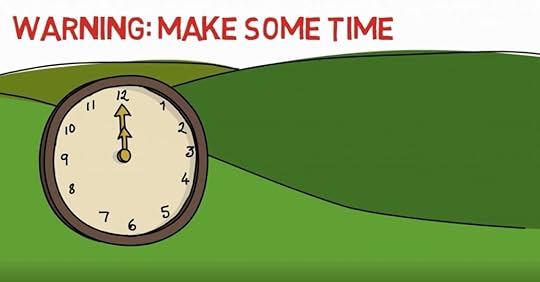
Select the categories that interest you and browse curated content for work, life and play.
So far, I’ve only scratched the surface and explored Flipboard as a tool for my business. I’ve not gone into the realms of becoming a Flipboard Publisher – mostly because I can’t get my brain around RSS feeds!
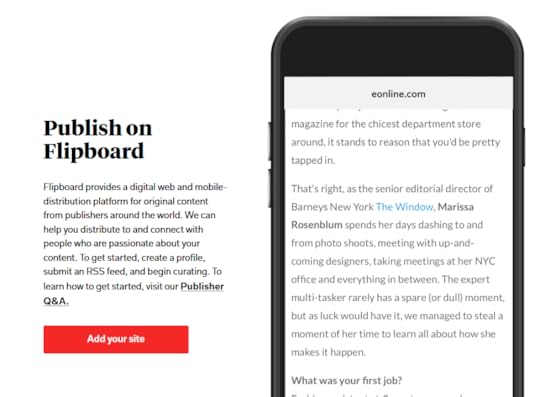
You can download a widget for your browser toolbar so whenever you discover any content worth keeping online you can quickly add it to your Flipboard.
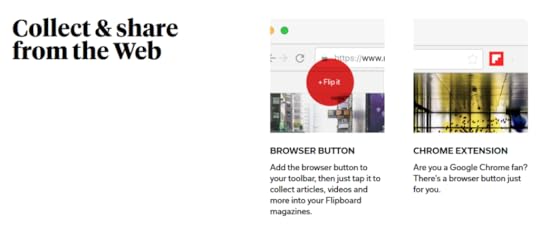
I’ve discovered two ways to incorporate the free version into your business:
Two Business Uses For Flipboard
1) A research tool to collect, curate and collate articles to refer back to
2) Create your own magazine to share content with your audience
Research Tool
You can set up boards for different topics, i.e. ‘Industry News’ and when you find content worth keeping, file it accordingly.
This is a great resource in your own continuous professional development, but you can also use it to inspire your own content ideas by referencing other people’s content or relevant news stories for your audience.
I’ve used Pinterest for this in the past, but I realise that for many, they can’t quite get past Pinterest’s reputation for being all about recipes and interior design! Flipboard could be a practical alternative to ‘yet another Social Media platform’ (although technically, Pinterest is a search engine, not a social platform).
Your Own Magazine
On discovering Flipboard, my Lightbulb moment was to compile my own monthly journal of inspiring content, for me and my audience to enjoy.
First, I needed to put criteria in place for what I would and wouldn’t collect and share, to set parameters for my ‘Editorial Calendar’.
It seemed only natural to call it ‘Lightbulb Moments’ – and I’m playing with the idea of thinking of it as a ‘Journal’.
Lightbulb Moments also aligns nicely with my mentoring package for 2020…
I didn’t want to be too narrow, I wanted to use the journal to cover a broad range of topics that align with the values of my business.
But I also wanted to avoid content that was overly negative or tied up in current affairs. There’s so much bad news out there already, it’s enough to make you lose faith in humanity!
I want to bring a little positive energy and illuminate the conversation – not get bogged down in the latest depressing political machinations!

My Business Values
These content decisions reflect the values of my business.
The core values of any business are the ‘Why’.
Why you do the work you do, for the people you do it for, in the way that you do it.
When you are the leader of your business, those values become inextricably linked with your own individual values, your world view. You may even have started the business around those core values, to make a difference, to change the world, in your own small way. For example, you may have started an ethical clothing business because you fundamentally object to the waste and environmental destruction caused by the ‘fast fashion’ industry.
Once you know ‘your why’ – your values as a business, everything else starts to fall into place. Adding more and more detail and breaking down those dreams and aspirations into real, practical steps to move forward.
This ‘Shape of your business’ can then form the structure of your business plan.
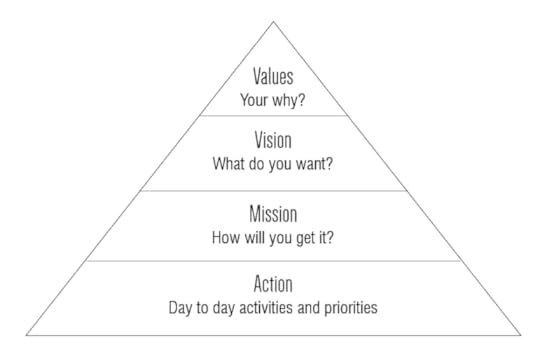
‘The Shape of Your Business’ – The structure for your business plan.
Align With Your Values
If you align everything you do with those core values, you’ll build a business that is rewarding, gratifying and that you can’t help but be passionate about. I can write a whole other blog about values and why they are important! For now, here are the headlines for my core values as a business:
Freedom through entrepreneurship
Community & collaboration
Reduce my environmental impact and live a more sustainable life
Share and talk about what matters to me, to inspire and empower others
Knowing this, and defining them clearly in writing, creates criteria for the content I seek and share.
Find me on Flipboard
You can find my profile here and read the Lightbulb Moments Journal…
Issue 1 – January 2020
View my Flipboard Magazine.
Issue one of ‘Lightbulb Moments Magazine’
For instant updates when I publish a new blog post, Follow me on Bloglovin’
For extra goodies and exclusive new information, join my mailing list HERE.
The post Idea Sharing vs Idea Creating – Discovering Flipboard appeared first on Amy Morse.

